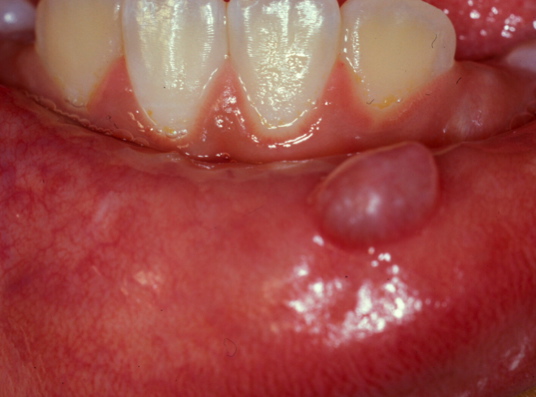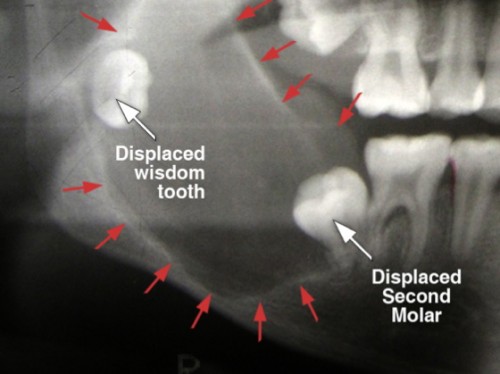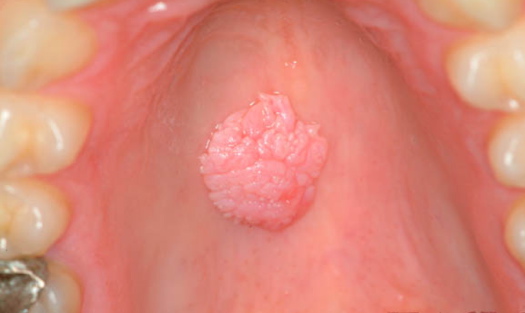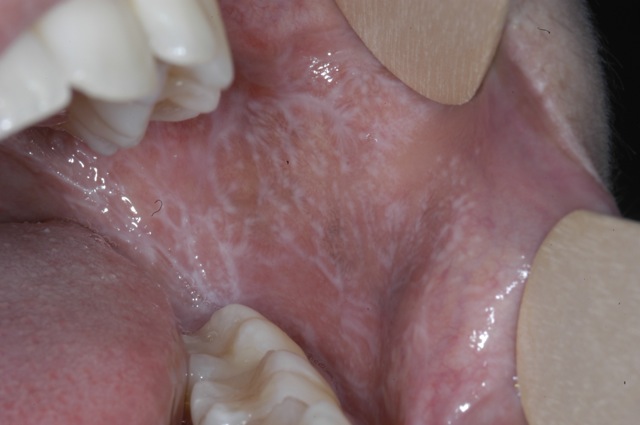
Oral Pathology
& Biopsies
Schedule an Appointment
Types of Oral Pathology Conditions
You might have suddenly noticed a sore spot in your mouth. Perhaps you feel a lump on the inside of your cheek that seems to have grown over the last few months. Or on your last dental X-rays your dentist noted a dark area around your impacted wisdom tooth resembling a cyst. Perhaps during your cleaning, your dentist noticed a white area, pigmented spot, or an ulcer in your mouth that was not there before.
Oral lesions can occur at any age and virtually any where in the mouth, including tongue, cheeks, roof of mouth, floor of mouth, gum tissues, and jaw bone. The majority are benign but occasionally may be more aggressive or even malignant. Early detection, evaluation, and treatment are important in its management.
Different types of oral pathological conditions include cysts, masses, ulcerations, or lesions. The condition may be benign commonly presenting as a slow growing, well-defined, and painless lesions. On the other hand, malignant lesions grow rapidly, are often painful, and have broad and irregular borders.
Any abnormality must be evaluated and treated as soon as possible by an oral surgeon. A biopsy is generally indicated for any abnormal condition which has not resolve spontaneously in 7-10 days.

Jaw Bone Cysts
Cysts are empty spaces or cavities in the jaw bone with a thin lining and fluid inside. Cysts may occur in upper or lower jaws. The majority of cysts of benign and are associated with teeth, referred to as odontogenic cysts.

Lumps, Masses, & Growths
Lumps can occur anywhere in the mouth: lips, gum tissue, cheeks, tongue, or palate. Such lumps or masses may develop quickly or gradually over months or even years. Some remain the same size and do not change their characteristics while others change in size, color, and symptoms such as pain. Most are benign masses and are not serious.

Lesions and Ulcers
A lesion is a general term referring to an abnormality in the tissue. Lesions may be flat or raised, ulcerated, painful, acute or chronic, and have different causes. Whatever the cause or appearance, a lesion is not normal and must be evaluated and treated.

Biopsy Treatment
If you have a new lesion see your dentist or oral surgeon for immediate evaluation. For some lesions, observation and re-evaluation in 10 to 14 days may be recommended. In others, immediate biopsy may be indicated to establish early diagnosis and treatment.
Anesthesia
Anxiety is not uncommon among people with oral lesions requiring biopsies or while awaiting for the definitive diagnosis by the oral pathologist. We’ll try our best to answer your questions and provide you with information as soon as available to help put your mind at ease.
Anxiety with oral surgery in general is mostly related to hearing of others’ bad experiences with excessive pain, swelling, and complications. We resolve this in several ways. First, the use of IV sedation allows patients to nap during the surgery. This helps greatly to make them comfortable and reduce anxiety. Second, patients will be cared for by a group of affable staff members who take time to personally connect with each patient and allay their fears and concerns. Third, the surgery is done conservatively, which minimizes or avoids swelling, pain, and complications.
Anesthesia as the solution:
The best way to manage anxiety and make sure you have the best possible experience is to opt for IV sedation. It is the recommended and chosen by many patients. Dr. Kazemi is trained and licensed in administering office anesthesia. Its safety is attributed to continued monitoring techniques, short acting nature of the medications, availability of emergency equipment, and most importantly proper training of the surgeon and the staff. Other options are local anesthesia, with or without nitrous oxide (laughing gas) but patient is completely awake and fully aware of the procedure.
Recovery
Recovery from biopsies can vary based on type of oral condition and necessary treatment
More Information
Treatment Cost and Insurance
The cost for surgery depends on the type of lesion, its size, location, procedure, and type of anesthesia. Once you have been examined and treatment plan completed, the exact cost will be discussed.
Frequently Asked Questions
Detailed frequently asked question section on oral pathology and biopsy procedures
Brochure
Detailed brochure on biopsies: cysts, masses, and lesions